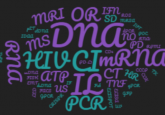BioTechniques top ten peer-reviewed articles

As we approach the middle of 2017, we take a look back at what the most popular peer-reviewed papers have been so far this year.
Next-generation sequencing of whole genomes and exomes is a powerful tool in biomedical research and clinical diagnostics. However, the vast amount of data produced by NGS introduces new challenges and opportunities for identifying the causal variants for a disease of interest.This article reviews a set of guidelines, tools, and online resources for identifying functional variants from whole-genome and whole-exome data adn associating them with potential phenotypes.
This paper describes a method for using CRISPR/Cas9 genome editing to insert a gene of interest along with a protein quantification reporter into a specific genomic site. This preserves the host cell’s genome integrity and facilitates the process of single cell clonal isolation, while allowing the expression levels of the protein of interest to be monitored in single cells over time.
For this paper, the authors modified a standard fluorescent immunolabeling protocol by increasing the antibody incubation temperature to mammalian body temperature (37°C). This improved both the quality and efficiency of fluorescent immunolabeling of free-floating thick tissue sections.
To work around a lethal Cas9 endonuclease–mediated knockout of an essential gene, these authors constructed an Epstein-Barr virus episomal expression vector to complement the absence of the essential protein. The compensating vector restored viability following CRISPR/Cas9-induced gene knockout, allowing a systematic mutagenesis of the essential protein of interest to define its domains and functions.
This article presents a simple technique for producing dextramers that improve the sensitivity of antigen-specific T-cell detection relative to pMHC tetramers. The approach is inexpensive, easy to adopt in a biology or immunology lab setting, compatible with state-of-the-art techniques, and applicable to other biotinylated molecules.
This paper presents TumbleScore, a MATLAB-based software for processesing bacterial motility movies to obtain swimming behavior metrics. The program automatically segments video frames, identifies cells, tracks movements, removes noise, and performs specialized analyses.
In this paper, the authors show that whole cells from Drosophila melanogaster serve as suitable spike-ins for calibrating human gene expression data to the number of cells in the sample, resulting in absolute fold-change estimates.
In a novel method, these authors used TaqMan probes to block amplification of the wild-type allele during asymmetric PCR in order to enrich a mutant allele. This modification increases mutation detection sensitivity by DNA melting analysis ~10-fold while using the same TaqMan probes.
Tip Snip cloning uses restriction enzymes to shorten unwanted DNA fragments, after which sticky ends can be neutralized by synthetic oligonucleotides. By eliminating the need to gel purify the desired restriction fragments, Tip Snip enables automation of the entire subcloning workflow.
This article compares two genomic DNA fragmentation methods—restriction enzyme digestion and sonication—for use in simple sequence repeat detection. After microsatellite-enriched library construction and high-throughput sequencing of DNA fragments generated using each method, the authors detected and compared SSR regions through integration of paired-end reads and clustering of integrated reads.





